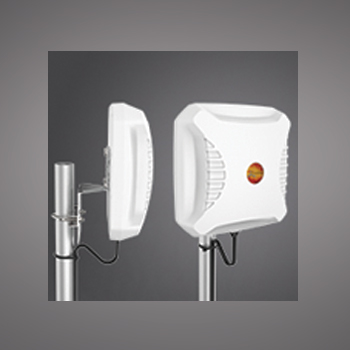How To Orientate A Directional LTE Antenna During Installation?

1. Known Cellular Mobile Network Sites
The first option would be to find the location of your nearest cellular base stations. This is sometimes possible by checking:
Your operator’s web site – however, this information is usually not available on their websites as they do not necessarily want to disclose this information to their competitors. Enquiring with your cellular network operator via their help desk (or if you have contact to their technicians after a call was logged)
Surveying the area for base stations (towers or rooftop sites) with their signs on. Check https://opensignal.com/ or other sources on the internet for coverage maps of the area, the higher intensity of coverage levels are usually where the site is located. This can be followed with a survey of that area as mentioned above.
Once the nearest base station sites are determined, the antenna can be installed towards the direction of those sites and can be tested for each scenario. The nearest site or site with Line of Sight (LOS) is usually preferred. It is best to test towards more than one cellular site, as the nearest site / LOS site is not always the best due to the terrain, interference, capacity/utilisation, etc. as all of these factors influence the stability, availability and throughput of the link to the antenna.
2. Cellular Mobile Network Site Locations Are Unknown
In situations where the locations of the cellular mobile network sites are unknown, and where the known locations do not provide sufficient results, a more iterative process can be followed by testing in all the directions:
Point the antenna towards a direction where coverage is expected (e.g. the nearest town), or you can start in a known direction, e.g. North. Test the service and then redirect the antenna with equal angle increments and test again. Keep repeating this until the various directions have been tested, making a full 360 degrees. Take note of the signal strengths and quality measured in each direction.
For the LPDA-92 and XPOL-2 antennas, a measurement interval of 45 degrees will be sufficient. This means that one needs to take measurements in eight different directions, e.g. 0, 45, 90, 135, 180, 225, 270 and 315 degrees. For other antennas, the measurement intervals can be determined from their azimuth (horizontal) radiation patterns shown on their technical specifications.
Use the best performing azimuth as the baseline and install the antenna in that direction (It is possible to further optimise the azimuth of the antenna by testing again at +20 degrees and -20 degrees from that position, should you require.)
Once fully installed; test again to ensure that the same results are achieved.
3. Test Measurements
You are able to conduct the abovementioned test measurements with most 3G/LTE enabled routers, which are capable of reporting the cellular network signal strength and quality, such as RSRP, RSRQ, SINR, etc. (see the table below).
- Some mobile phones also have access to this information, as well as some apps on the market. It is best to reboot the router or device before each test measurement is taken to ensure that it is not camping on the previous cellular site – this is because a 3G/LTE enabled router or cell phone can ‘lock’ onto the previous cellular site even when the new
cellular site is at a much better signal level and quality. It is therefore advised to rather reboot the device each time to ensure that the best site is ‘locked’ on to. This may be a slightly slower process, but a more reliable form of determining the best azimuth.
Throughput tests can also be performed, but please take note that the throughput results are highly dependent on network and many internet bandwidth/routing related influences. Throughputs tests should therefore only be performed for indicative purposes of what throughput is possible and not for comparative tests.

4. General Tips
The location of the antenna on the building/premises and its installation is very important to ensure the optimal use of the antenna, and hence the performance of the whole system.
Although the usual rule of thumb applies of installing the antenna as high as possible, from an RF coverage perspective; it is sometimes possible that the antenna is in a null (weak coverage spot) at that specific height. In this case, the height can be adjusted to achieve the best service possible – in a few cases, it was found that a lower installation height achieved better results, but this is not the norm.
Cellular network signals and quality can fluctuate, often with 6 to 12 dB. A measurement that is taken now and a few moments later can differ substantially even if nothing apparent has changed – this can be due to many aspects, such as fading, reflections, interference, capacity due to high utilisation, etc. Network throughput can also change significantly due to these factors.
It is possible that the network topology and usage change over time, even from one minute to the next as the network utilisation increases. If poor performance is experienced at a later stage, re-test different azimuths and antenna installation locations again. It is possible that the currently serving cellular site has become over utilised or out of service. As the network design and topology changes, so will the experience change, either for the better or for the worse – this will require iterative measures with regards to the installation azimuth and position.
Please see our webinar for more information regarding Antenna Implementation
Considerations
Written by Stephen Froneman
For more information on any of these products have a look at the product information sheets on our website or contact us.
Please have a look at our Blog for more articles on LTE antennas, RF and electromagnetic engineering.

